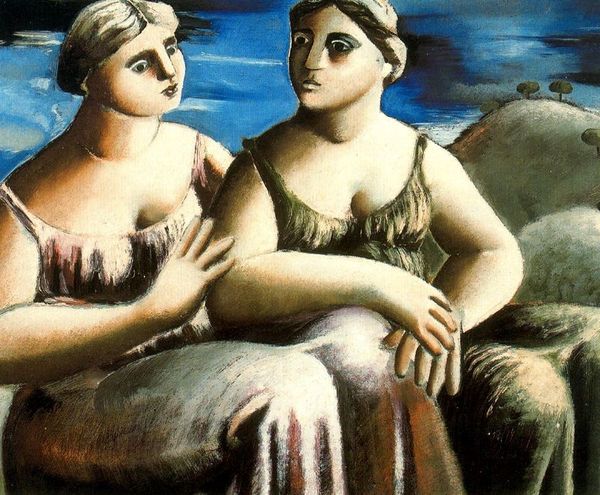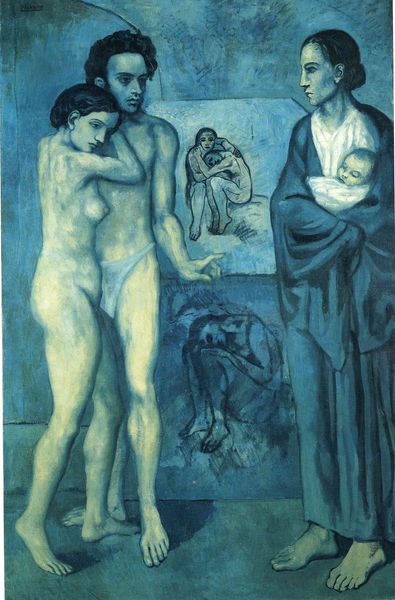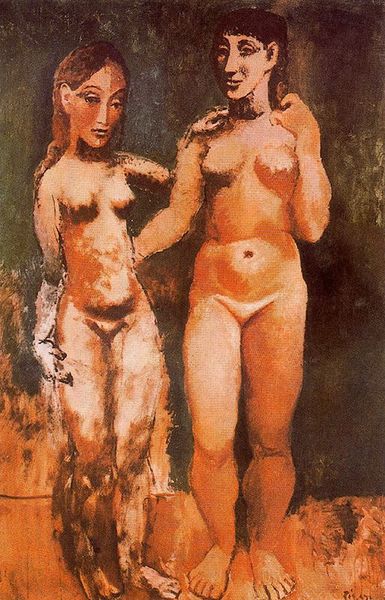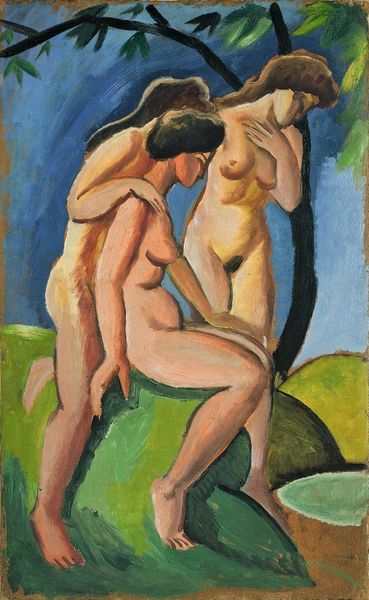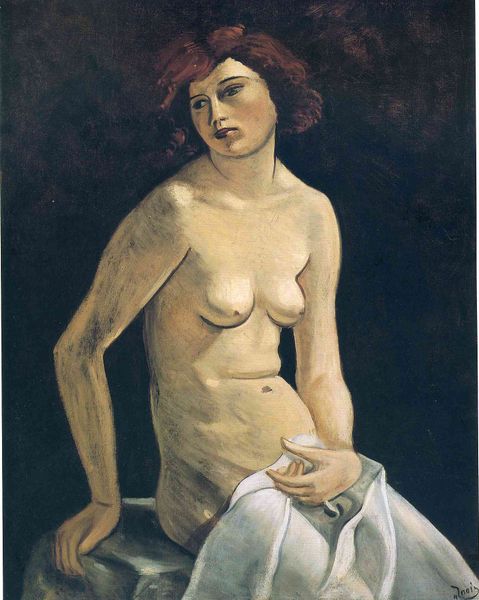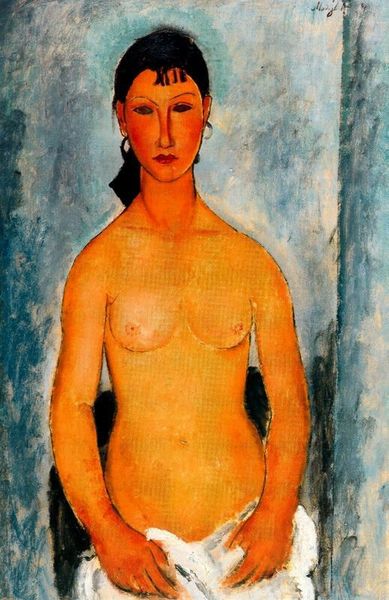
drawing, pastel
#
drawing
#
cubism
#
figuration
#
oil painting
#
female-nude
#
group-portraits
#
pastel
#
nude
Copyright: Public domain US
Curator: Here we have Pablo Picasso's "Two Nude Women," a drawing created in 1920, a fascinating work that reflects Picasso's exploration of the female form and the shifting artistic currents of the time. Editor: There’s a muted melancholy in this composition; the hues feel aged, the lines both softened and harshly defined, and these figures appear weary, contemplative. Curator: Exactly, and situating this pastel within its era reveals Picasso grappling with the post-World War I cultural landscape. He returned to classical forms, a phenomenon mirrored by many artists seeking stability after immense upheaval. The nude, then, wasn't simply an aesthetic choice but a symbolic return to humanism, perhaps even a quiet rebellion against pre-war avant-gardism. Editor: Yes, the figures almost harken back to archaic statues. Note, however, how Picasso employs a somewhat disjointed realism. There's a tenderness here, almost a motherly quality between the women, but the disrupted proportions—especially in the limbs and facial features—give it a strange, unsettling tone. Are they icons of comfort, or is there a subtle discomfort, a societal fracture, conveyed through the rendering of these intertwined women? Curator: Precisely. Picasso blends classical ideals with nascent Cubist elements, suggesting the multifaceted nature of identity. Are we seeing representations of a singular woman in multiple temporal states? Is it perhaps an argument of gender in this time? Editor: Their vulnerability is emphasized by the soft pastel medium and the embrace feels simultaneously intimate and detached, the pale shroud-like drapery hinting towards mourning perhaps. What strikes me is the enduring visual potency—these archetypes reverberate even now, a mirror reflecting both historical anxieties and intimate connection. Curator: Indeed. And the exploration of these complex layers underscores the potent dialogue possible between historical context and art as social and emotional expression. Editor: Looking closely at "Two Nude Women," we encounter an experience which feels strikingly timeless. Curator: Agreed; it is not merely a study of the human form, but rather, the study of human identity and collective consciousness.
Comments
No comments
Be the first to comment and join the conversation on the ultimate creative platform.


